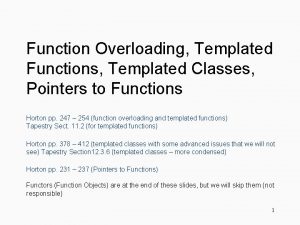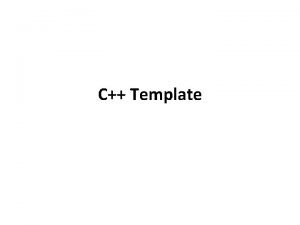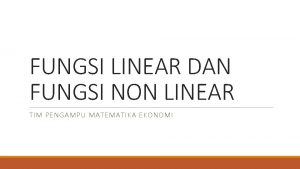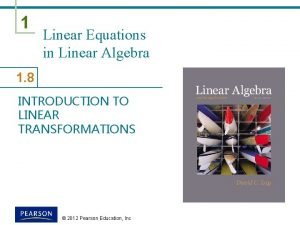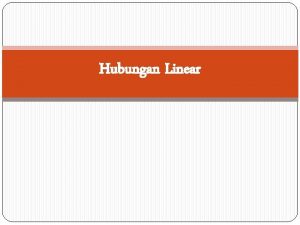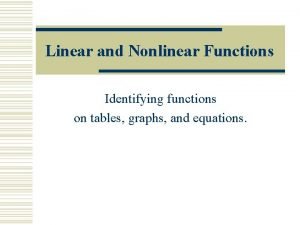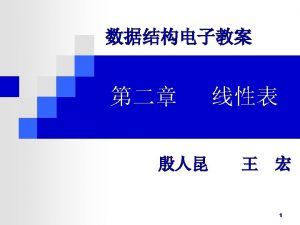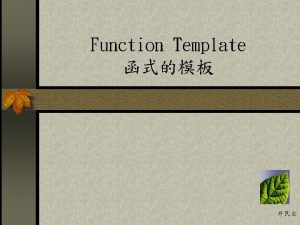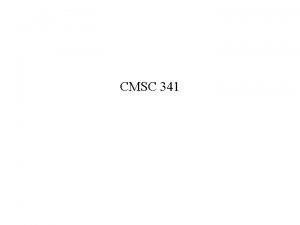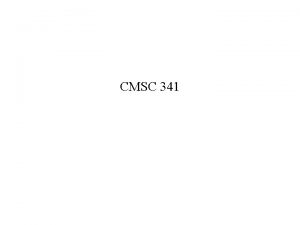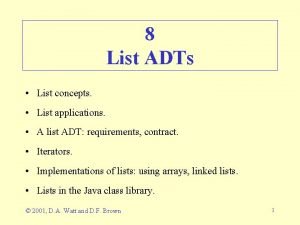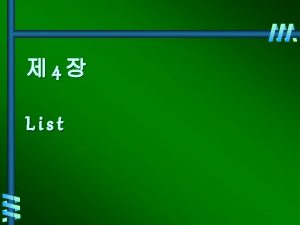Linear List template class T class linear List


































- Slides: 34









基 于 公 式 化 的 线 性 表 类 Linear. List template <class T> class linear. List { // 程序 5. 1 public: virtual linear. List() {}; //构造函数 virtual bool empty() const = 0; virtual int size() const = 0; //返回元素个数 virtual T& get(int the. Index) const = 0; //返回第 the. Index元素 virtual index. Of(const T& the. Index) const = 0; // virtual void erase(int the. Index) = 0; // 删除第the. Index个元素 virtual void insert(int the. Index, const T& the. Element) 0; // 在the. Index位置上插入the. Element virtual void output(ostream& out) const = 0; }; 山东大学计算机科学与技术学院 数据结构 第 3章 数据描述 9


变长一维数组程序 template<class T> void change. Length 1 D (T*& a, int old. Length, int new. Length) { if (new. Length < 0) throw illegal. Parameter. Value(“new length must be >=0”); T * temp = new T(new. Length); int number = min(old. Length, new. Length); copy (a, a+number, temp); delete [] a; a = temp; } 山东大学计算机科学与技术学院 数据结构 第 5章 数据描述 11

template <class T> class array. List : public linear. List<T> //5 -3 array. List 类定义,从虚拟类派生array. List { public: arraylist. List(int initial. Capcity = 10) ; //构造函数 arraylist. List(const array. List<T>&); arraylist. List(delete [] element; ) bool empty() const {return list. Size == 0}; int size() const {return list. Size; }; //返回元素个数 T& get(int the. Index) const ; //返回第the. Index个 元素 int index. Of(const T& the. Index) const ; void erase(int the. Index) ; 山东大学计算机科学与技术学院 数据结构 第 3章 数据描述 12

void insert(int the. Index, const T& the. Element) ; void output(ostream& out) ; int capacity () const {return array. Length; } protected: void check. Index(int the. Index) const; //当下�超 范�,按异常�理 T* element; //指向第一个元素的指� int array. Length; int list. Size //��元素个数 }; 山东大学计算机科学与技术学院 数据结构 第 3章 数据描述 13

构造函数 基于给定的长度,创建空表 template<class T> array. List<T>: : array. List(int initial. Capacity) { if (initial. Capacity <1) {ostringstream s; s << “initial capacity = “ << initial. Capcity << “ Must be > 0 “; throw illegal. Parameter. Value(s. str()); } array. Length = initial. Capcity; element = new T[array. Length]; list. Size = 0; } n 时间复杂性 : Q(1) 山东大学计算机科学与技术学院 数据结构 第 3章 数据描述 14

构造函数 通过copy产生新表 template<class T> array. List<T>: : array. List(const array. List<T> & the. List) { //基于存在的链表the. List, 复制一个新链表 array. Length = the. List. array. Length; element = new T[array. Length]; copy(the. List. element, the. List. element+list. Size, element); //起点-终点,目的地 } n 时间复杂性 : Q(array. Length) 山东大学计算机科学与技术学院 数据结构 第 3章 数据描述 15

Template<class, iterator> void copy(iterator start, iterator end, iterator to) { while (start != end) {*to = *start; start ++; to ++) } 山东大学计算机科学与技术学院 数据结构 第 3章 数据描述 16

check. Index template<class T> void array. List<T>: : check. Index(int the. Index) const { if (the. Index < 0 || the. Index >= list. Size) {ostringstram s; s << “index =“<< the. Index << “ size =“<< list. Size; } throw illegal. Index(s. str()); } 山东大学计算机科学与技术学院 数据结构 第 3章 数据描述 17


操作 ‘Search’ template<class T> int array. List<T>: : index. Of(const T& the. Element) const { // 返回元素the. Element第一次出� 的下� // 如果� 元素不在表中,� 返回 -1 int the. Index= (int)(find(element, element+list. Size, the. Element) – element; //find 是STL� 的� 准函 数, 若找到,� 算� 果是� 元素的位置,否� 是 list. Size。 if (the. Index == list. Size) return -1; elese return the. Index; } //�� 复� 性 : O(list. Size) 山东大学计算机科学与技术学院 数据结构 第 3章 数据描述 19

操作 ‘erase’ n template<class T> void array. List<T>: : erase(int the. Index) { //删除其索引为the. Index的元素 //如果不存,则引发异常illegal. Index check. Index(the. Index); copy(element+the. Index+1, element+list. Size, element+th e. Index); //把the. Index+1~list. Size元素左移一位。 element[--list. Size]. T(); //调用析构函数把该元素回收 } 时间复杂性 : O((list. Size-the. Index)s) 山东大学计算机科学与技术学院 数据结构 第 3章 数据描述 20

Insert an element at the. Index template<class T> void array. List<T>: : insert(int the. Index, const T& the. Element) { if (the. Index<0 || the. Index>list. Size) { ostringstram s; s<<“index=“ << the. Index << “size =“ << list. Size; throw illegal. Index(s. str()); } if (list. Size == array. Length) //空间上不允许插入了 {change. Length 1 D(element, array. Length, 2*array. Length); array. Length *= 2; } //数组长度 2倍变长 copy_backward(element+the. Index, element+list. Size+1); //从最右元素开始 element[the. Index]= the. Element; list. Size ++; } 山东大学计算机科学与技术学院 数据结构 第 3章 数据描述 21



操作 ‘Output’ template<class T> void array. List<T>: : output(cout -> out) const { //把表输送至输出流 copy (element, element+list. Size, ostream_iterator<T>(cout, “ “)); } //重� << template <class T> ostream& operator<<(ostream& out, array. List<T>& x) {x. output(out); return out; } 山东大学计算机科学与技术学院 数据结构 第 3章 数据描述 24

Template<class, iterator> void copy(iterator start, iterator end, iterator to) { while (start != end) {*to = *start; start ++; to ++) } C++ STL 定义了5中迭代器,I/O, 向前(后),双向,随机。 使用前要为iterator 赋初值 class iterator; iterator begin() {return iterator(element); ) iterator end() {return iterator(element+list. Size(; ) 若是双向 reverse(y. begin(), y. end()); //逆向访问 int sum = accumulate(y. begin(), y. end(), 0); 山东大学计算机科学与技术学院 数据结构 第 3章 数据描述 25

使用方法 linear. List *x = (linear. List) new array. List<int>(100); array. List<double> y(100) 山东大学计算机科学与技术学院 数据结构 第 3章 数据描述 26


class iterator { public: typedef bidirectional_iterator_tag iterator_category typedef T value_type; typedef ptrdiff_t difference_type; typedef T* pointer; typedef T& reference; //typedef的用途: 为已有的数据类型重新命名。 iterator(T* the. Position = 0) {position =the. Position; } T& operator*() const {return *position; } T* operatior->() const {return &*position; } 山东大学计算机科学与技术学院 数据结构 第 3章 数据描述 28

iterator& operator++() {++position; return *this; } iterator& operator++(int) {iterator old = *this; ++position; return old; } //因� 二者形式相同,加int()目的是为了区分,使用时只 要写成后++就调用这个函数 iterator& operator--() {--position; return *this; } iterator& operator--(int) //同上 {iterator old = *this; --position; return old; } 山东大学计算机科学与技术学院 数据结构 第 3章 数据描述 29

bool operator != (const iterator right) const {return position != right. position; } bool operator == (const iterator right) const {return position = right. position; } protected: T* position; } 山东大学计算机科学与技术学院 数据结构 第 3章 数据描述 30


n#include <iostream> n#include <vector> nusing namespace std; nint main() n{ nvector<int> v; //v是存放int类型变量的可变长数组,开始时没有元素 nfor (int n = 0; n<5; ++n) nv. push_back(n); //push_back成员函数在vector容器尾部添加一个元素 nvector<int>: : iterator i; //定义正向迭代器 nfor (i = v. begin(); i != v. end(); ++i) { //用迭代器遍历容器 ncout << *i << " "; //*i 就是迭代器i指向的元素 n*i *= 2; //每个元素变为原来的2倍 n} ncout << endl; n//用反向迭代器遍历容器 nfor (vector<int>: : reverse_iterator j = v. rbegin(); j != v. rend(); ++j) ncout << *j << " "; nreturn 0; vector 0 1 2 3 4 n} output 8 6 4 2 0 山东大学计算机科学与技术学院 数据结构 第 3章 数据描述 32


 Class list log observation
Class list log observation Sebutkan fitur-fitur yang terdapat di panel publisher
Sebutkan fitur-fitur yang terdapat di panel publisher Photo shot list template
Photo shot list template How is function overloading different from template class
How is function overloading different from template class Bin tree
Bin tree Template class t t func(t a)
Template class t t func(t a) Simple and multiple linear regression
Simple and multiple linear regression Contoh soal metode numerik biseksi dan penyelesaiannya
Contoh soal metode numerik biseksi dan penyelesaiannya Linear vs nonlinear text
Linear vs nonlinear text Nonlinear plot structure definition
Nonlinear plot structure definition Contoh iterasi sederhana
Contoh iterasi sederhana Linear pipeline processors
Linear pipeline processors Non multimedia system
Non multimedia system Left linear grammar
Left linear grammar Perbedaan fungsi linier dan non linier
Perbedaan fungsi linier dan non linier Apa yang dimaksud dengan fungsi non linier?
Apa yang dimaksud dengan fungsi non linier? Linear independence of vectors
Linear independence of vectors Linear algebra linear transformation
Linear algebra linear transformation Penggal lereng
Penggal lereng Linear impulse equation
Linear impulse equation Contoh simultan
Contoh simultan Nonlinear graph
Nonlinear graph Nonlinear function table
Nonlinear function table Difference between linear and nonlinear
Difference between linear and nonlinear Nonlinear video editing
Nonlinear video editing Eliminasi gauss naif
Eliminasi gauss naif Closure properties of regular languages
Closure properties of regular languages Texto com narrador personagem
Texto com narrador personagem Struktur linier
Struktur linier Linear list representation
Linear list representation Linear list representation
Linear list representation Axiomatic system definition
Axiomatic system definition Singly linked list vs doubly linked list
Singly linked list vs doubly linked list Singly linked list vs doubly linked list
Singly linked list vs doubly linked list List g shows list of
List g shows list of



